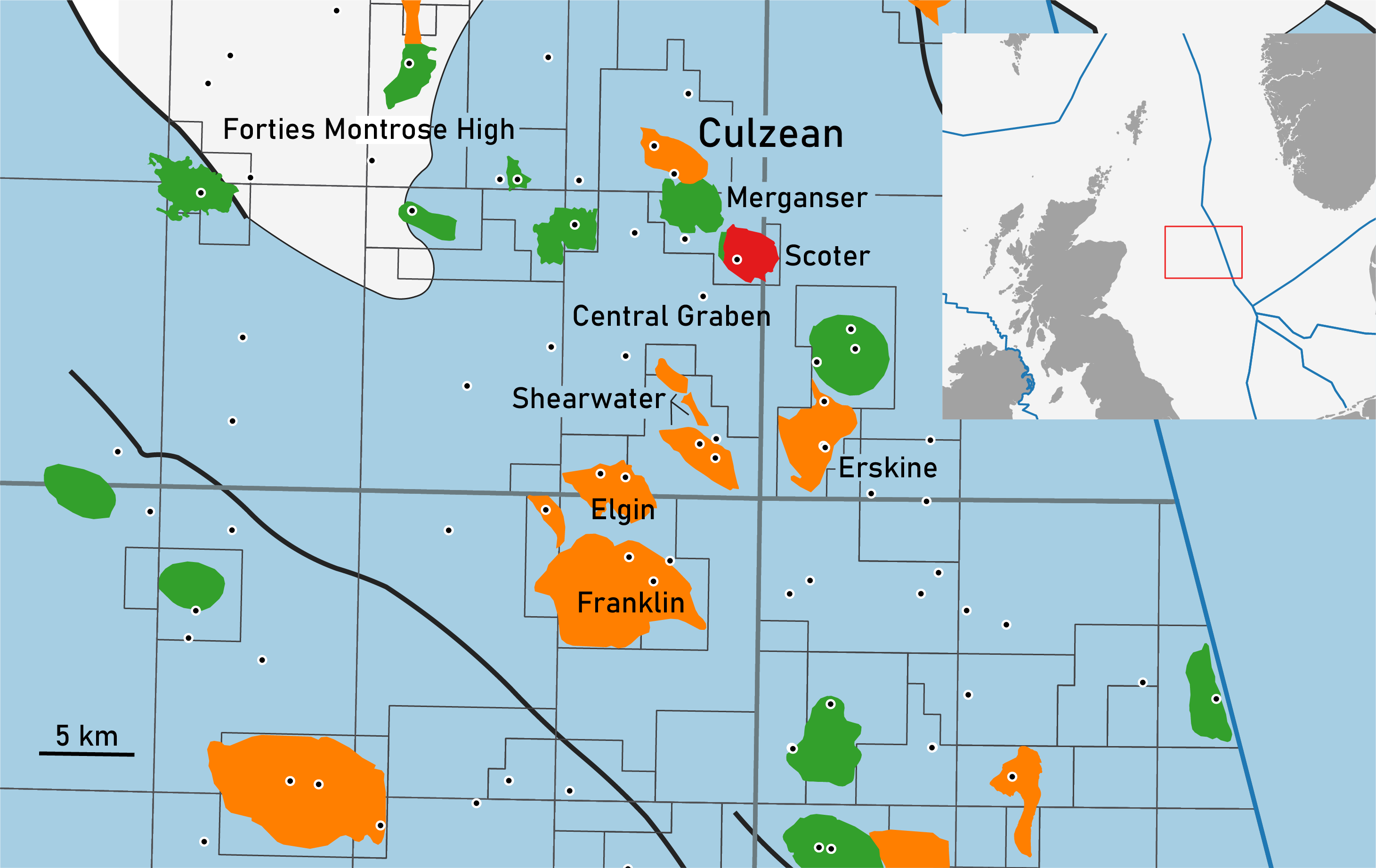Discovered by Maersk in 2008, the Culzean HPHT field in the UK Central North Sea came on stream in July 2019. Due to the Maersk takeover by Total in 2017/2018, the French firm is now the operator of the field, with partners BP (32%) and JX Nippon (18.01%).
Many people will remember the gas leak on the Elgin field in 2012. This incident, partly triggered by well failure due to a compacting overburden, prompted a raft of research to mitigate for similar issues in future developments. One of the measures taken with regards to the development of Culzean is that the platforms are offset from the crest of the field. This means that the wells approach the reservoir at an angle, which is anticipated to result is less strain onto the casing as compaction will be most severe in the area just above the reservoir.
Let’s have a closer look at the field itself, as presented during the most recent Devex Conference.

Reservoired in Triassic sandstones of the Skagerrak Formation (Joanne and Judy Members), with a small contribution coming from the Middle Jurassic Pentland Fm, Culzean is different from nearby HPHT fields such as Elgin, Franklin and Shearwater which mainly produce from the Upper Jurassic Fulmar Formation.
Culzean however shares its burial depth with the above-mentioned fields, exceeding 4000 m at a pressure of around 930 bar and 170 degrees C. Despite this, porosity of the Joanne fluvial sandstones is still 17% on average, with permeability ranging from 0.001 to 1000 mD.
A salt-induced fault block, Culzean gas is trapped in the updip SW area by a combination of fault sealing and truncation by the Base Cretaceous Unconformity, and dip closure in the east. A particular aspect of the Culzean field is the source; Culzean is thought to be primarily sourced by the Middle Jurassic coal-prone Pentland Formation rather than the Upper Jurassic Kimmeridge Clay.

Given the ultra-high reservoir pressure, placement of the casing shoe immediately above the top of the reservoir is key. In order to achieve a distance less than 100 feet from the top reservoir, lookahead VSP was used in addition to real time on-site biostratigraphy to differentiate between the Lower Cretaceous Formations.
See also: Real-time geochemical analysis as an aid to drilling HPHT wells
Producing at a rate of ~100,000 boed, with recoverable hydrocarbons exceeding 300 MMboe, Culzean is expected to contribute 5% of UK gas supply in 2020.
HENK KOMBRINK





